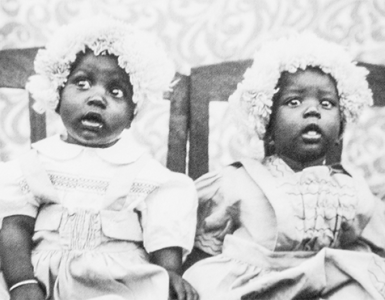MYSTIQUE: Author Paula Akpan delves into rainmakers’ history, and mysticism to control weather…
By Jacob Mawela
With August being a Women’s Month, and the coronation of Princess Masalanabo as the seventh Rain Queen of the Balobedu nation of Modjadjiskloof, Limpopo, the book expounding the adventures of the 12 queens and warriors seems an appropriate read.

Reputed to have ruled vast swathes of the African continent, the release of such a book, reflecting on the Princess and the queens, will add to the existing knowledge trove.
When We Ruled, authored by Paula Akpan, a black British historian, the book takes the reader’s imagination to a timeline spanning pre-colonial Nigeria, farming villages of Rwanda, hills of Madagascar, and apartheid South Africa.
Through narratives, the book depicts how societies thrived and fractured prior to colonial influence.
The cumulative result of Akpan’s almost two months of travel in Africa’s west coast of Cote d’Ivoire, Bénin, Ghana, Nigeria, and down to its southern tips of South Africa, eSwatini, Madagascar, as well as towards its centre, Rwanda and Burundi.
Akpan’s desire was to untangle and de-centre fixed assumptions imposed by white colonial historians about Africa.
She achieved this through comparing and contrasting their versions with lived indigenous experiences and history.
Conscious of the well-worn notion of history being written by the victors, in her introduction, Akpan acknowledges to have written with an intention to carefully analyse, for the benefit of clarity, what she means by colonial ‘accountable’ histories seeking to supplant counter-history.
Among a dozen tales she dissects, some resonate with the South African reader’s experiences. They refer to the mystical Rain Queen of the Balobedu nation – a matrilineal dynasty or society founded on matriarchal lineage dating back to the 1800s when the first ever hereditary queen assumed the reins until her death in 1854.
Focusing on the more recent Queen Makobo Modjadji VI, Akpan travelled from London to the Khehlekone Royal Palace at Ga-Modjadji to delve into the history of rainmakers believed to possess the power to control the weather.
Makobo’s biography constitutes a tragic tale.
Her mother, Princess Mmakheala Modjadji, died aged 37. This was two days before her grandmother, Mokope Modjadji V, precipitated the then 23-year-old princess’ ascendency to the throne.
What then followed was a brief reign lasting between 2003–2005. She is said to have succumbed to chronic meningitis, aged 26.
The young monarch’s misfortunes would posthumously extend to her daughter Princess Masalanabo – an infant of four months at the time of her death.
In 2022 her half-brother Prince Lekukela Modjadji – with the connivance of a faction of the all-male Modjadji Royal Council – sought to supersede her succession to the throne by citing the then teenage heiress’ “lack of preparation” as a reason.
Following a period of royal disputes and legal challenges, a court ultimately ruled in the princess’ favour. The South African government has formally recognised her investiture or her inauguration in 2024.
The coronation of the 20-year-old as Masalanabo II Modjadji VII is due to take place this month (August) – a hereditary role passed down a succession of female rulers with a lineage tied to the ancient Karanga kingdom of Mwanamutapa, the present-day south eastern Zimbabwe.
The title Modjadji, the ruler of the day, had been bequeathed to the enigmatic monarchs whose story is an important part of South African history.
Rulers of the people, or rain queens, subjugated other tribes and fought against white intruders. According to the author, they have been visited and honoured or recognised at their kraals by the country’s state presidents – both the present and of the apartheid era.
The claim of supernatural power to induce rain to their allies and bring drought to enemies is rooted in the traditions and culture of the Balobedu people, but has still to be scientifically supported.
Akpan expounds on the exploits of Njinga A Mbande, a gender-blurring ruler of Ndongo and Matamba – the latter-day Angola.
Mbande’s reign was misrepresented by the Portuguese as a ‘volatile, unstable and abject ruler to be distrusted and ultimately removed from power – all because their military and diplomatic prowess was deemed to present a threat to the occupiers’ interests.
A non-conformist, Mbande commanded their own troops into battle, wore masculine garb, kept male concubines for their carnal appetite, and used a male-coded name.
According to the author, Mbande killed those deemed a threat to their hegemony, and manipulated terms of trade and answered to no other.
Between 1622 and 1663 they defied 13 Portuguese governors – whose occupation of their people’s land had endured seventy years at the time they ascended the Ndongo throne asserting that “since I was born to rule my kingdom, I do not have to obey nor recognise another sovereign”.
Also featured in the book, are Moremi Ajasoro, the 12th century Spy Queen of the Yoruba of the present-day south western Nigeria; Tassi Hangbé, the Regent of Dahomey; Mentewab, the Empress of Ethiopia; Ranavalona I, the anti-imperialist punisher of the Kingdom of Madagascar; and Nana Yaa Asantewaa, the war-leading Elder.
The book is voluminous, slightly more than 400 pages, is well annotated representing a well of invaluable information.
The author’s effort offers a game-changing tapestry of the past.
· A trade paperback, When We Ruled is published by Orion and distributed in South Africa by Jonathan Ball Publishers. Available at leading bookstores countrywide. It retails for R440
































